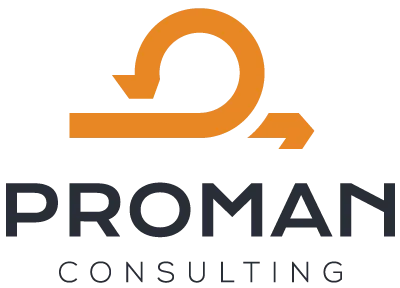OWASP Top 10: The biggest cybersecurity risks and their solutions
As the digital world continues to evolve, online services have become part of our everyday lives, but cyber threats are also becoming more common. A single security breach can cause serious data loss, financial damage or loss of user confidence. OWASP is an international non-profit organisation that provides guidelines, methodologies and tools to help developers and security professionals create more resilient and trustworthy web applications. In this article, we describe the importance of OWASP and its methods for strengthening web security.

What is OWASP?
The Open Web Application Security Project (OWASP) is an international non-profit organisation dedicated to helping developers and companies make their web systems more secure. The recommendations and methodologies developed by OWASP are recognised worldwide and play a vital role in strengthening cyber security.

How can OWASP help cybersecurity?
OWASP offers a wide range of solutions that are useful not only for developers, but also for IT security professionals and administrators.
OWASP Top 10: Industry standard for vulnerability identification
The OWASP Top 10 is one of the industry's most important lists of the most common types of web vulnerabilities and how to fix them. The list serves as a guide to protect applications and minimize cybersecurity risks.
OWASP Testing Guide: detailed guide to security testing
The OWASP Testing Guide is a comprehensive methodology to help with application vulnerability assessment. This step-by-step guide shows how to identify potential risks and how to carry out security checks.
OWASP Code Review Guide: security-aware development
During the development process, it is essential to review the code to identify potential vulnerabilities in time. The OWASP Code Review Guide provides recommendations that can help to improve security auditing and reduce the risk of programming errors.
OWASP ZAP: Automated Vulnerability Assessment
The OWASP ZAP (Zed Attack Proxy) is a free and open source tool to help you test the security of your applications. It can automatically identify common vulnerabilities such as SQL Injection or Cross-Site Scripting (XSS) attacks. Using ZAP, developers can detect and fix security flaws at an early stage.
OWASP Dependency-Check: security analysis of external components
Modern development often uses external libraries and modules, and outdated versions of these can be vulnerable. The OWASP Dependency-Check is a tool that helps to detect vulnerabilities in third-party software components used in applications and provides recommendations for updates.
OWASP Threat Modelling: risk analysis in the planning phase
Threat Modeling enables developers and administrators to identify potential threats at the design stage. OWASP helps to apply threat modelling techniques to reduce the vulnerabilities that can be exploited by attacks.
OWASP SAMM: Implementing secure development processes
The Software Assurance Maturity Model (SAMM) supports companies to build security into every phase of the software development lifecycle. With the OWASP SAMM, organizations can measure and improve their security maturity.
OWASP Secure Coding Practices:Secure Coding Guide
The Secure Coding Practices guide helps developers learn the principles of secure coding. The recommendations developed by OWASP can help reduce common coding mistakes and the security risks they pose.
OWASP ASVS: Application Safety Verification Standard
The Application Security Verification Standard (ASVS) is an OWASP project that serves as an industry standard for application security verification. It helps developers and security professionals to more easily determine how well an application meets security requirements.
OWASP Kubernetes Security: protecting cloud systems
Kubernetes is becoming increasingly popular for managing containerised applications, but it also poses security challenges. The OWASP Kubernetes Security project provides recommendations for securely configuring Kubernetes-based systems and mitigating potential threats.

OWASP Top 10: The most common vulnerabilities
Now let's take a look at the OWASP Top 10, which will help you understand what threats to expect and how to effectively defend against them!
1. Broken Access Control errors
Privilege management flaws allow attackers to perform unauthorised operations on a web application. For example, a user with low privileges could gain administrative rights or access sensitive data.
Prevention options:
- Introduction of restricted access rules.
- Regular review of eligibility levels.
- Access logging and monitoring.
2. Cryptographic Failures
Sensitive data (e.g. passwords, bank details) can be easily leaked due to inadequate encryption. If data is stored or transmitted unencrypted, it can be easily obtained by attackers.
Prevention options:
- Use modern encryption algorithms (e.g. AES-256).
- Use TLS (Transport Layer Security) for all data transfers.
- Avoid unnecessary storage of sensitive data.
3. Injection attacks (Injection, e.g. SQL Injection)
In injection attacks, attackers send malicious code into an application, such as SQL commands through a search box. This can result in databases being broken or commands being executed on the application server.
Prevention options:
- Validate and filter user inputs.
- Using parameterized queries with SQL databases.
- Use of code checking and automated testing.
4. Security Design Flaws (Insecure Design)
Security weaknesses can already be identified at the application design stage. For example, easy-to-guess answers to password reset questions or weak authentication processes can pose a serious risk from the start.
Prevention options:
- Security-aware design and threat modelling.
- Safety checks built into every stage of the development cycle.
- Follow OWASP recommendations for safe development.
5. Bad security configuration (Security Misconfiguration)
Improperly configured systems are an easy target for attackers. For example, if an application runs unnecessary services, it can provide an attack surface.
Prevention options:
- Review default settings and disable unnecessary services.
- Conduct regular security audits.
- Regularly apply updates and patches.
6. Use of Vulnerable and Outdated Components
Developers often use external libraries and modules that may contain security flaws. If such an outdated component is vulnerable, the whole application can be compromised.
Prevention options:
- Apply regular updates and security patches.
- Use only components from reliable sources.
- Introduction of vulnerability analysis tools.
7. Identification and Authentication Failures
Improper authentication processes allow attackers to gain unauthorised access to a system. For example, an easily guessed password or a login interface left unprotected by brute force attacks can be a serious security problem.
Prevention options:
- Strong password requirements and use of multi-factor authentication (2FA).
- Automatic lockout after too many failed login attempts.
- Encrypted password storage (e.g. bcrypt, Argon2).
8. Software and Data Integrity Failures
Attackers can compromise an application through malicious updates or modified data. For example, if a system automatically accepts updates from an external source, this could pose a risk.
Prevention options:
- Use digital signatures to check for software updates.
- Security monitoring and logging of CI/CD processes.
- Validate data from external sources.
9. Security Logging and Monitoring Failures
If a system does not record security events, attacks can go undetected. Most data leaks and security incidents are discovered after the fact, when significant damage has already been done.
Prevention options:
- Implement regular logging and real-time monitoring.
- Use of automatic alarms and intrusion detection systems.
- Encrypt logs and restrict access.
10. Server-Side Request Forgery (SSRF)
An attacker can use spoofed URLs to trick a server into accessing protected resources, such as an internal network system.
Prevention options:
- Check outgoing and incoming URL requests.
- Use IP address and DNS authorization lists.
- Validate input data and introduce strict rules.
Don't wait for a hidden vulnerability to compromise the security of your business! Contact us, and we help you strengthen your systems with the latest OWASP policies and security strategies!

 Designabc
Designabc